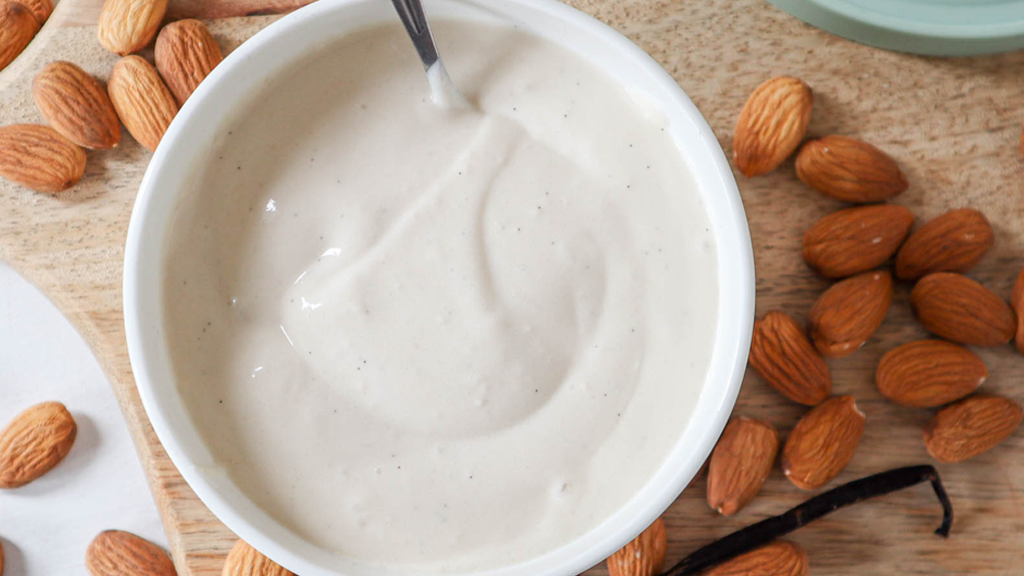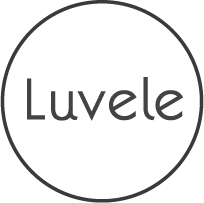Your Cart is Empty
FAST DISPATCH
FREE SHIPPING
FAST DISPATCH
FREE SHIPPING
FAST DISPATCH
FREE SHIPPING
Add description, images, menus and links to your mega menu
A column with no settings can be used as a spacer
Link to your collections, sales and even external links
Add up to five columns
Add description, images, menus and links to your mega menu
A column with no settings can be used as a spacer
Link to your collections, sales and even external links
Add up to five columns

Homemade vanilla almond milk yogurt recipe
Barb Hodgens
Barb Hodgens loves to cook with alternative, healthy whole food ingredients, with a focus on gut health. Barb has overcome her own gut health issues through healthy eating. Share your ideas, comments and photos at the end of this post :)

Thick and creamy dairy-free yogurt.
This homemade vanilla almond yogurt is smooth, thick, and tangy with just the right amount of sweetness. It’s everything you want from a yogurt, only 100% plant based. It’s a lusciously creamy yogurt alternative that’s perfect if you are lactose intolerant, vegan, or paleo. It’s made completely from scratch and isn’t at all difficult.
Vanilla almond yogurt is based on our original almond yogurt recipe. We experimented with the method, adding vanilla before fermentation and after and found that stirring in vanilla bean paste and a little sweetener at the end, after the almond yogurt had chilled produced the most flavoursome and delicious vanilla experience.

First, you need to make almond milk. We describe in detail how to make almond milk here. If you’ve sampled homemade nut milk, you’re sure to agree that nothing compares. Commercial almond milk might be convenient but additives and preservatives interfere with the fermentation process.
Our homemade almond milk method recommends starting with whole almonds (with skins on), but we found that blanched almonds produce a more subtle (less earthy tasting) nut milk. Experiment and discover which you prefer. Furthermore, don’t add sweetener or vanilla to your nut milk while blending. In this method we add these after fermentation.

THICKENING DAIRY-FREE YOGURT
Almond milk yogurt will not naturally thicken up while fermenting like traditional dairy yogurt. A premium powdered gelatin or agar agar are our preferred thickening options. Use the amount specified in the recipe as a guide only. Add slightly more or less on your next batch to achieve the yogurt texture you enjoy most. Learn more about thickening plant-based yogurt here.
A LITTLE BIT OF SUGAR PROMOTES GOOD BACTERIA
Plant based milks require a little bit of sugar. Unlike animal milk, nut milk doesn’t naturally contain sugar. The Yogurt starter culture need sugar to feed on to allow the culturing process to take place. One teaspoon of sugar or one tablespoon of pasteurised honey is enough to kick start fermentation. Raw honey may have an antibiotic effect and is therefore not suitable for making yogurt.
STARTER CULTURE
You will need a dairy-free yogurt starter culture or probiotic to introduce the fermentation of bacteria to your nut milk. Use the amount of starter culture indicated on the packet or one dose of probiotic. A comprehensive list of starter cultures is available here. We used Cutting Edge Culture's, Yogurt Plus, dairy free probiotic starter culture.





Homemade vanilla almond milk yogurt recipe
Luvele
Rated 5.0 stars by 1 users
This homemade vanilla almond yogurt is smooth, thick, and tangy with just the right amount of sweetness. It’s everything you want from a yogurt, only 100% plant based. It’s a lusciously creamy yogurt alternative that’s perfect if you are lactose intolerant, vegan, or paleo. It’s made completely from scratch and isn’t at all difficult.
Ingredients
4 cups of unsweetened homemade almond milk
Yogurt starter culture or probiotic capsule
1 tablespoon of premium gelatin powder OR 1 teaspoon heaped teaspoon of powdered agar agar
1 teaspoon of white sugar OR 1 tablespoon of pasteurised honey (for the bacteria during fermentation)
1 teaspoon of vanilla bean paste (added after fermentation)
2-3 tablespoons of maple syrup or honey (added after fermentation)
Directions
Thoroughly wash or sterilise your yogurt making jar, whisk and other utensils with boiling water.
Make homemade almond milk following these instruction without adding vanilla or sweetener.
Pour the fresh homemade almond milk into a large saucepan.
Add your thickening powder of choice (1 tablespoon of gelatin powder or 1 heaped teaspoon of agar agar powder) and whisk to combine. Note the powder may sit on the surface until heated.
Place the saucepan of nut milk on the stove top. For Gelatin: Gently warm to body temperature 95⁰-104⁰F (35⁰- 40⁰C) to activate the gelatin. Stir with a wire whisk to ensure the gelatin has dissolved and is not settled at the bottom. Do not boil gelatin. For Agar agar: Gently heat the almond milk to 190⁰F (87⁰C) and hold the temperature for approx. 5 minutes to activate the agar agar. Do not boil.
Remove from the heat and let cool to below 110° F (43° C). The temperature must be below 43° C before adding the starter culture.
Pour the nut milk into the yogurt making glass jar.
Add your preferred starter culture and sugar (or honey) and gently whisk to combine.
Place the lid firmly on the glass yogurt jar and place into your yogurt maker. Pour water slowly into the base. (The water must not be filled over the ‘tall line’ indicated on the inside wall of the maker). Then place the cover lid on top.
Use the digital control panel to set the temperature to 38° C, the time to 12 -24 hours (depending on your desired tartness) and then press ‘confirm’ to begin incubation. Learn about fermentation time and temperature here.
At the end of the fermentation, turn the yogurt maker off. Remove the cover lid and gently lift out the glass jar. Straight from the yogurt maker, the almond milk yogurt will be warm and may look curdled, cracked or separated. Do not worry.
Place the jar in the fridge for at least 6 hours or overnight to set.
Add vanilla bean paste and your preferred sweetener (to taste) then whisk by hand to achieve a smooth creamy consistency.
Your vanilla almond yogurt is ready to be served.
Recipe Video
PIN THIS RECIPE


Homemade vanilla almond milk yogurt recipe

Thick and creamy dairy-free yogurt.
This homemade vanilla almond yogurt is smooth, thick, and tangy with just the right amount of sweetness. It’s everything you want from a yogurt, only 100% plant based. It’s a lusciously creamy yogurt alternative that’s perfect if you are lactose intolerant, vegan, or paleo. It’s made completely from scratch and isn’t at all difficult.
Vanilla almond yogurt is based on our original almond yogurt recipe. We experimented with the method, adding vanilla before fermentation and after and found that stirring in vanilla bean paste and a little sweetener at the end, after the almond yogurt had chilled produced the most flavoursome and delicious vanilla experience.

First, you need to make almond milk. We describe in detail how to make almond milk here. If you’ve sampled homemade nut milk, you’re sure to agree that nothing compares. Commercial almond milk might be convenient but additives and preservatives interfere with the fermentation process.
Our homemade almond milk method recommends starting with whole almonds (with skins on), but we found that blanched almonds produce a more subtle (less earthy tasting) nut milk. Experiment and discover which you prefer. Furthermore, don’t add sweetener or vanilla to your nut milk while blending. In this method we add these after fermentation.

THICKENING DAIRY-FREE YOGURT
Almond milk yogurt will not naturally thicken up while fermenting like traditional dairy yogurt. A premium powdered gelatin or agar agar are our preferred thickening options. Use the amount specified in the recipe as a guide only. Add slightly more or less on your next batch to achieve the yogurt texture you enjoy most. Learn more about thickening plant-based yogurt here.
A LITTLE BIT OF SUGAR PROMOTES GOOD BACTERIA
Plant based milks require a little bit of sugar. Unlike animal milk, nut milk doesn’t naturally contain sugar. The Yogurt starter culture need sugar to feed on to allow the culturing process to take place. One teaspoon of sugar or one tablespoon of pasteurised honey is enough to kick start fermentation. Raw honey may have an antibiotic effect and is therefore not suitable for making yogurt.
STARTER CULTURE
You will need a dairy-free yogurt starter culture or probiotic to introduce the fermentation of bacteria to your nut milk. Use the amount of starter culture indicated on the packet or one dose of probiotic. A comprehensive list of starter cultures is available here. We used Cutting Edge Culture's, Yogurt Plus, dairy free probiotic starter culture.




:recipekit:
PIN THIS RECIPE


Subscribe
Sign up to get the latest on sales, new releases and more …
